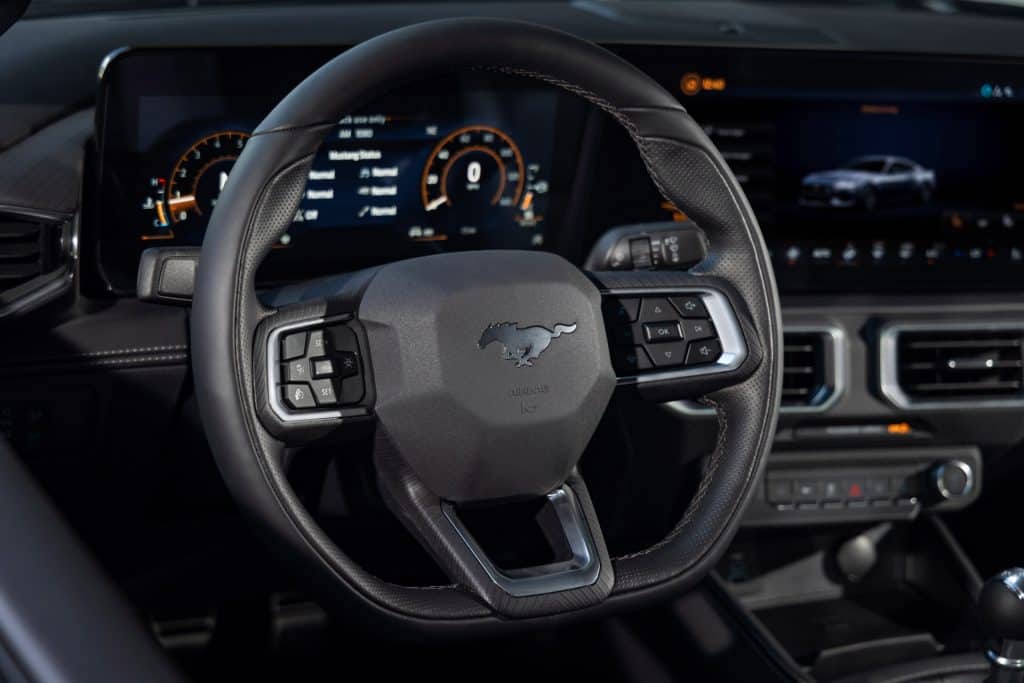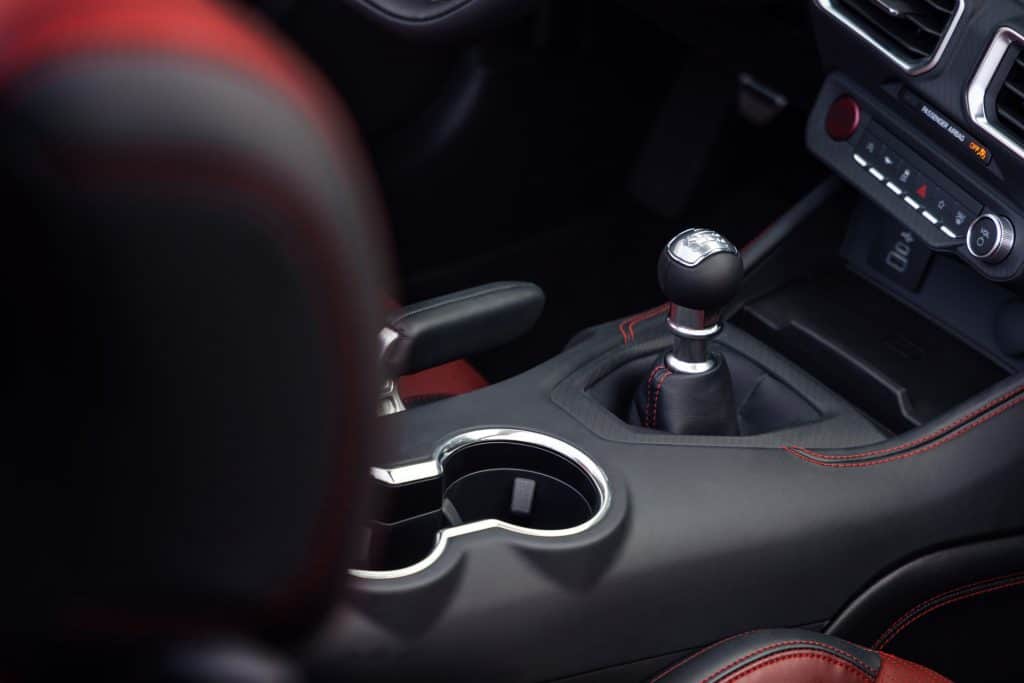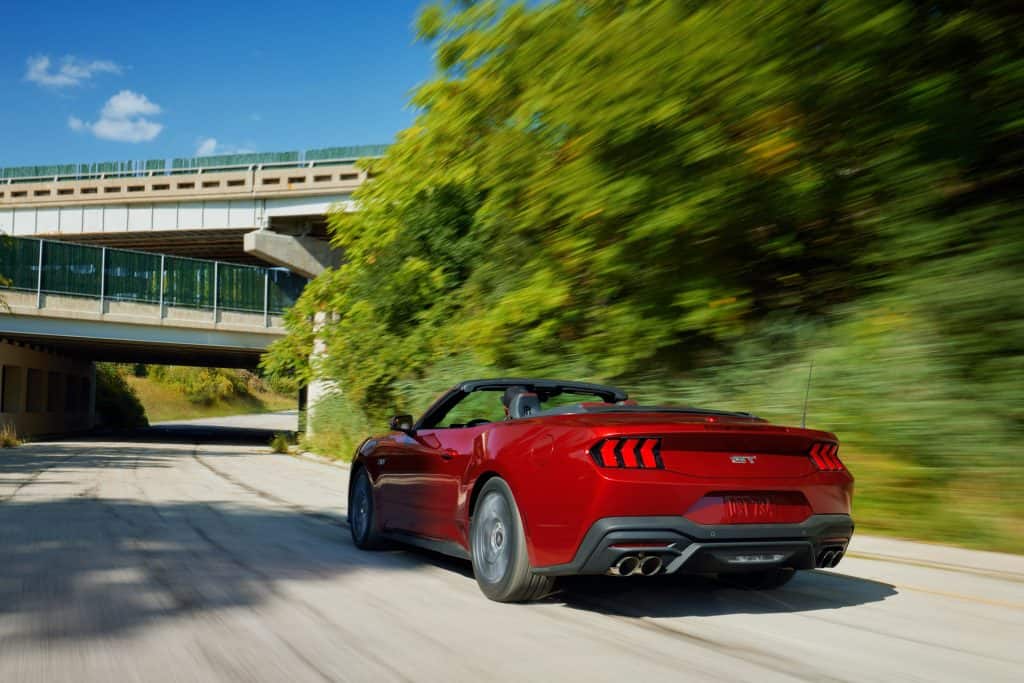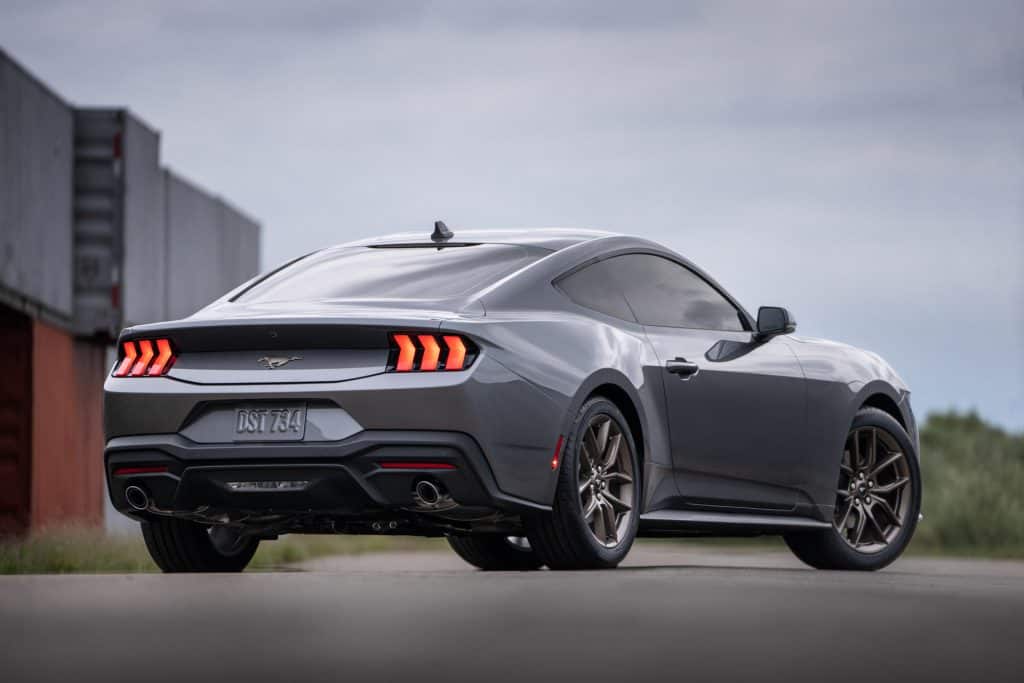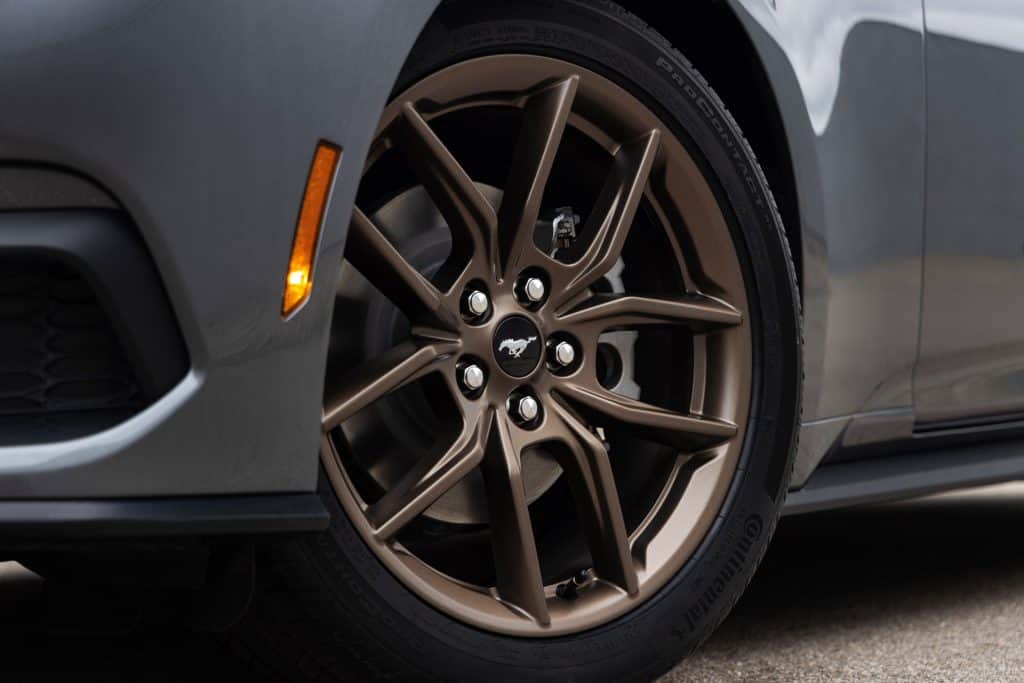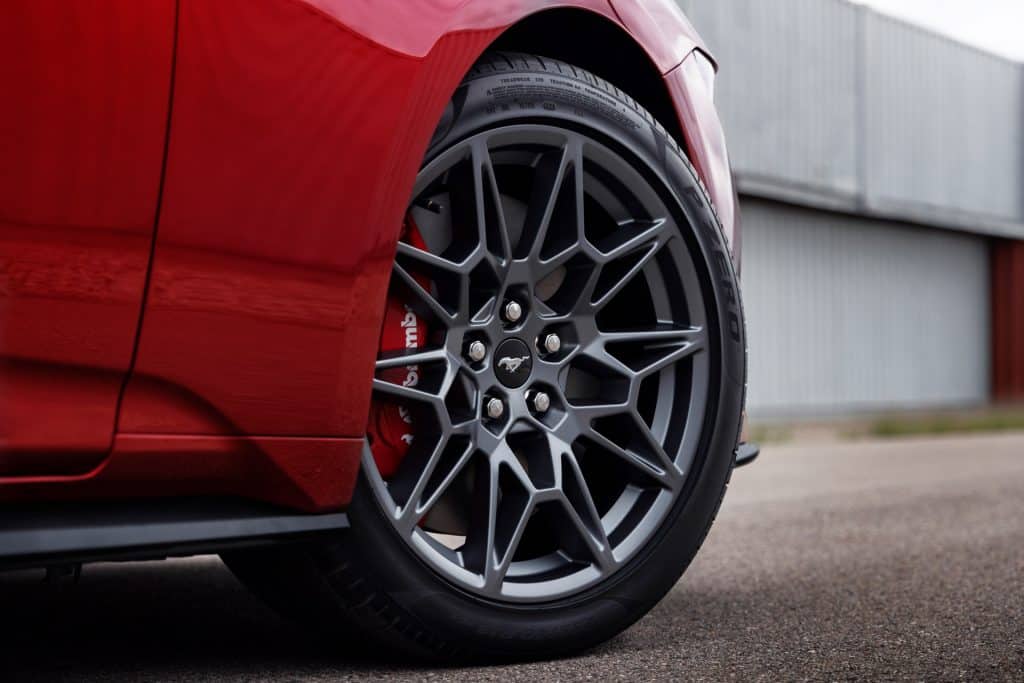The year was 1964. Ford introduced its longest-running nameplate that helped shape the world. I’m talking about the Ford Mustang and as of this writing, the Blue Oval adds another chapter to its lineage – a new version of the icon, the best-selling pony car of all time.
Now in its latest generation, the Mustang gets a complete redesign amid the era of electrification. And while its competitor has already introduced an electric version for its muscle cars, purists need not worry about the new Mustang coupe. The ‘Stang remains a gasoline-feeding muscle car for its seventh-generation model – packaged in a new yet largely familiar styling.
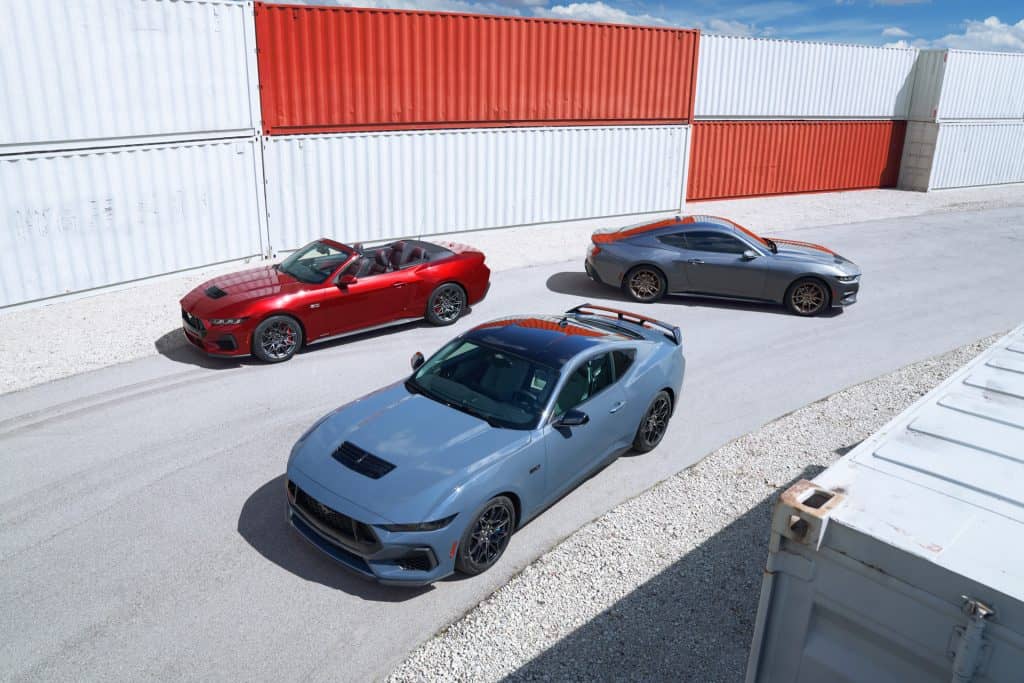
“Investing in another generation of Mustang is a big statement at a time when many of our competitors are exiting the business of internal combustion vehicles,” said Jim Farley, CEO of Ford Motor Company. “Ford, however, is turbocharging its ICE growth plan, adding connected technology, opinionated derivatives, and hybrid options to our most profitable and popular cars – all in the Ford Blue family – on top of investing $50 billion in electric vehicles through 2026.”
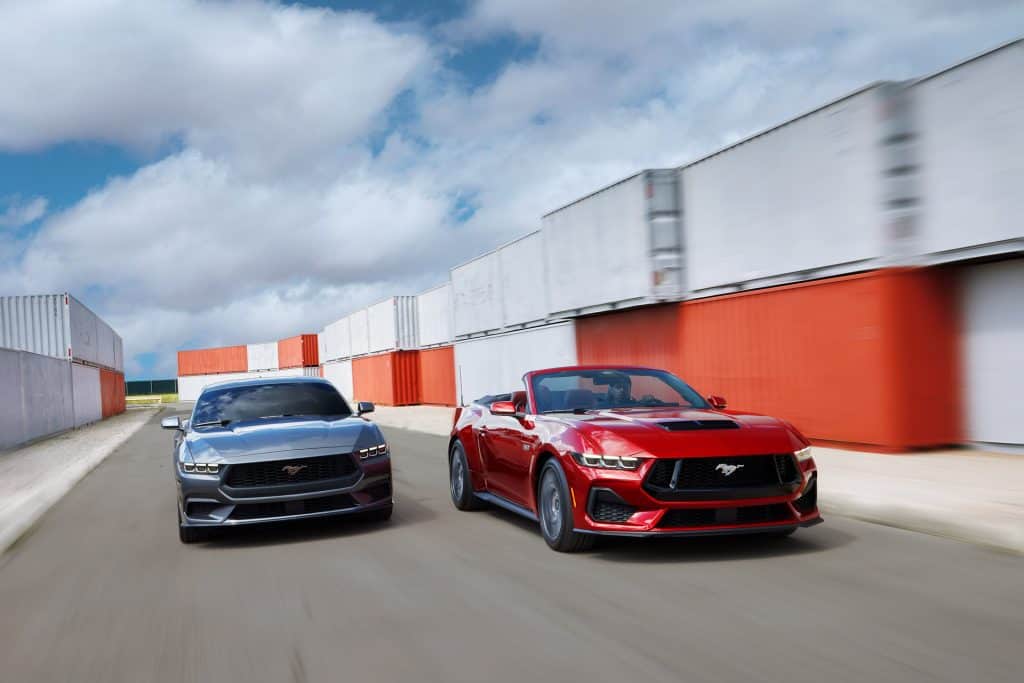
The seventh-generation Mustang comes with an edgier design, and I meant that in a literal sense. Ford foregoes the curves on the model, now using sharp cuts and chiseled lines. According to Ford, the horizontal bow on the Mustang emphasizes improved front width, while the upper grille design is influenced by the original design from the ‘60s. Of course, the tri-bar LED taillights are retained to reflect the ‘Stang signature, while the reworked proportions (sleeker roof, shortened rear overhand, and broader stance) try to call back to the shape of the original pony car.
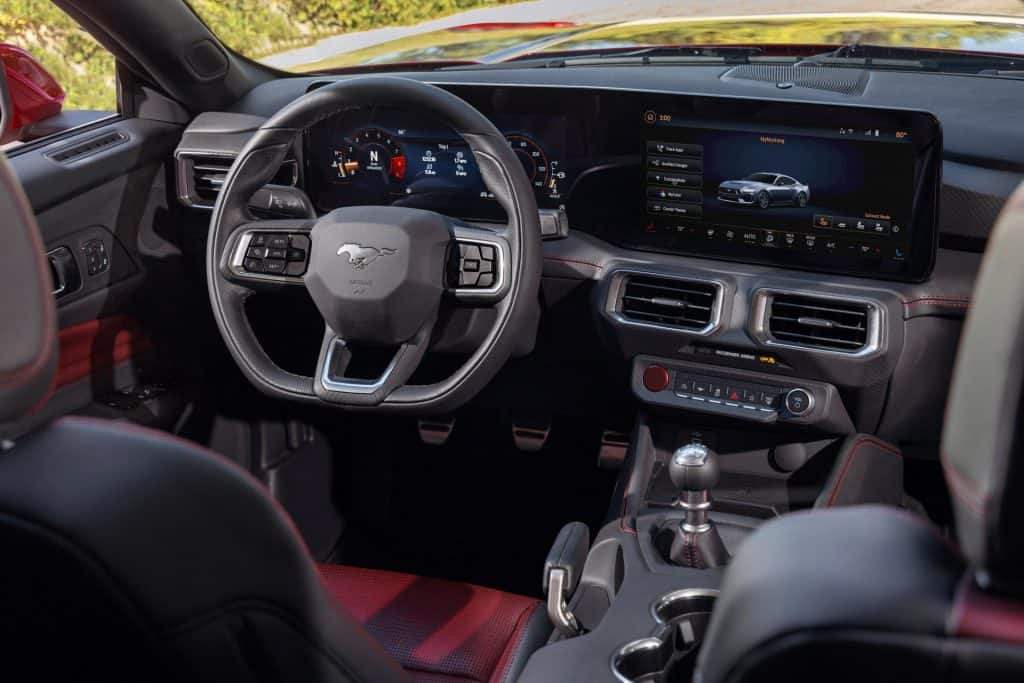
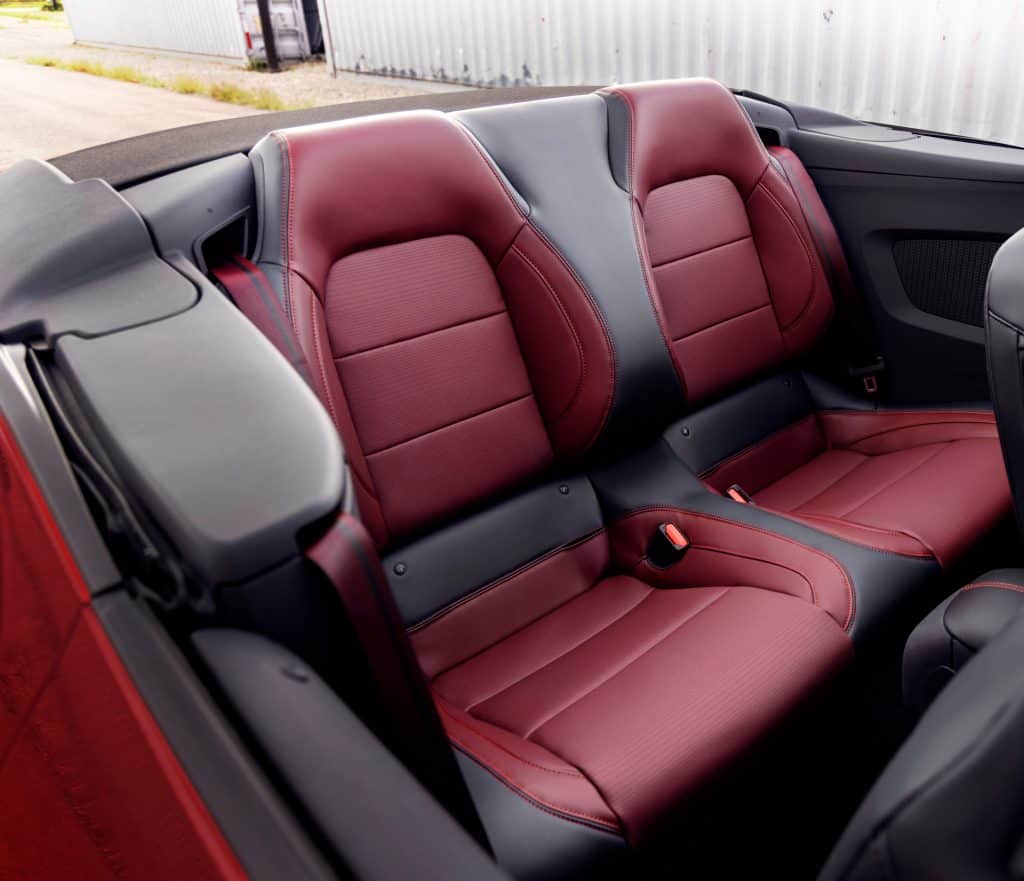
As there are GT and EcoBoost models in the range, the two are differentiated up front by the bigger active grille openings on the GT. There’s still a convertible version, with the roof operation done through a one-touch activation.
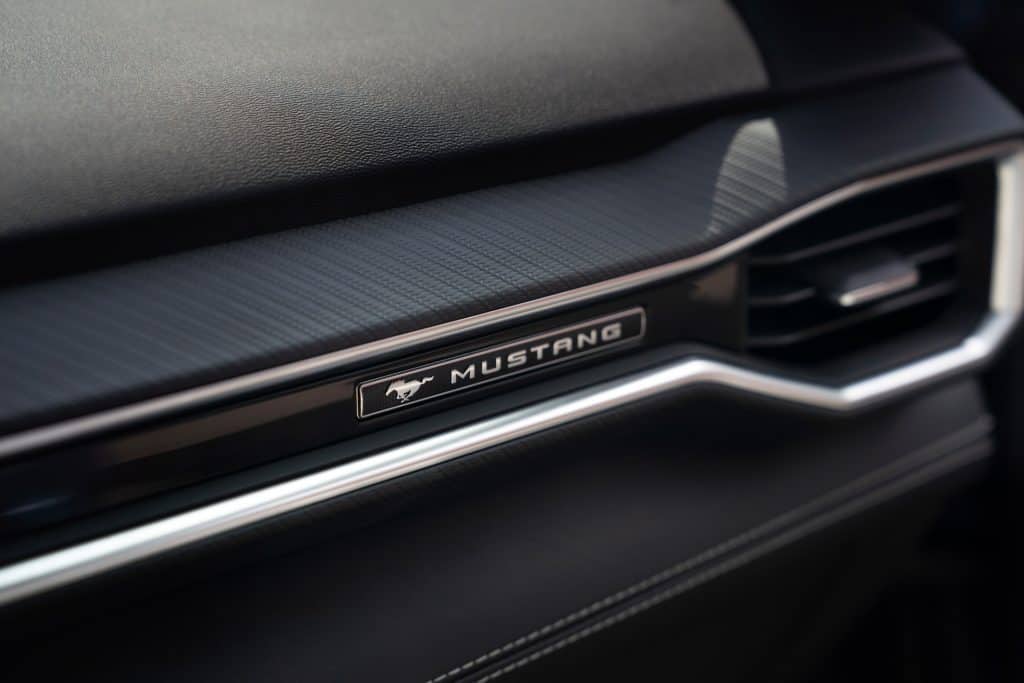
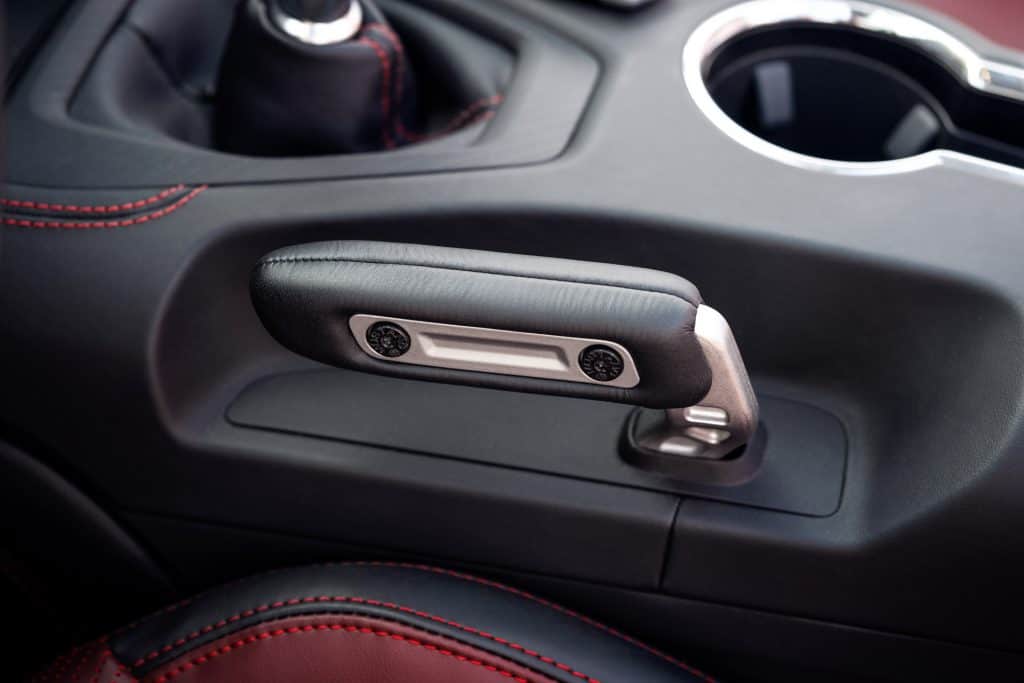
The new Mustang comes with 11exterior color options including two new shades, VaporBlue and Yellow Splash, complemented by new stripe colors and designs. Wheel sizes vary from 17-inch alloys on the base models, up to the 20-inch set on the GT. New for the range is the availability of the Mustang Design Series, providing further customization options straight from the factory. There’s also a Bronze Design Series Appearance Package that adds Sinister Bronze alloy wheels with bronze badges, and is available on both EcoBoost and GT models, with or without the optional Performance Pack.
Inside, Ford reimagines the Mustang for its seventh iteration. It’s the most technologically advanced, driver-centric Mustang cockpit yet said to be inspired by fighter jets. The crown of the front cabin is a pair of flowing and curved displays – easily customizable to whatever the driver desires.
Using the Unreal Engine 3D creation tool used in modern video games, the 12.4-inch digital instrument cluster can be customized to display different animated designs and new drive-mode-dependent visuals.
“We’re taking advantage of every pixel,” said Craig Sandvig, Ford Mustang interaction design manager. “We can be creative in showing necessary driving information and give the driver control of selecting colors, classic Mustang gauges, or even a ‘calm’ screen where only minimal details are displayed.”
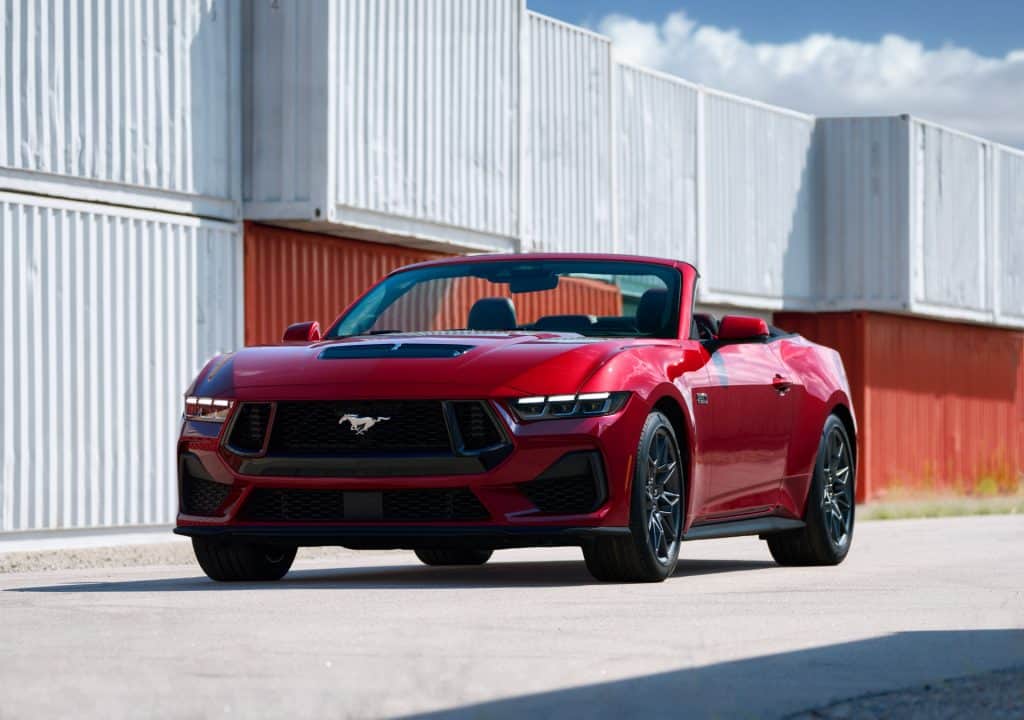
The digital instrument cluster can be configured to flow seamlessly into the SYNC 4-equipped 13.2-inch infotainment screen – both lying behind a single piece of integrated glass that’s angled toward the driver.
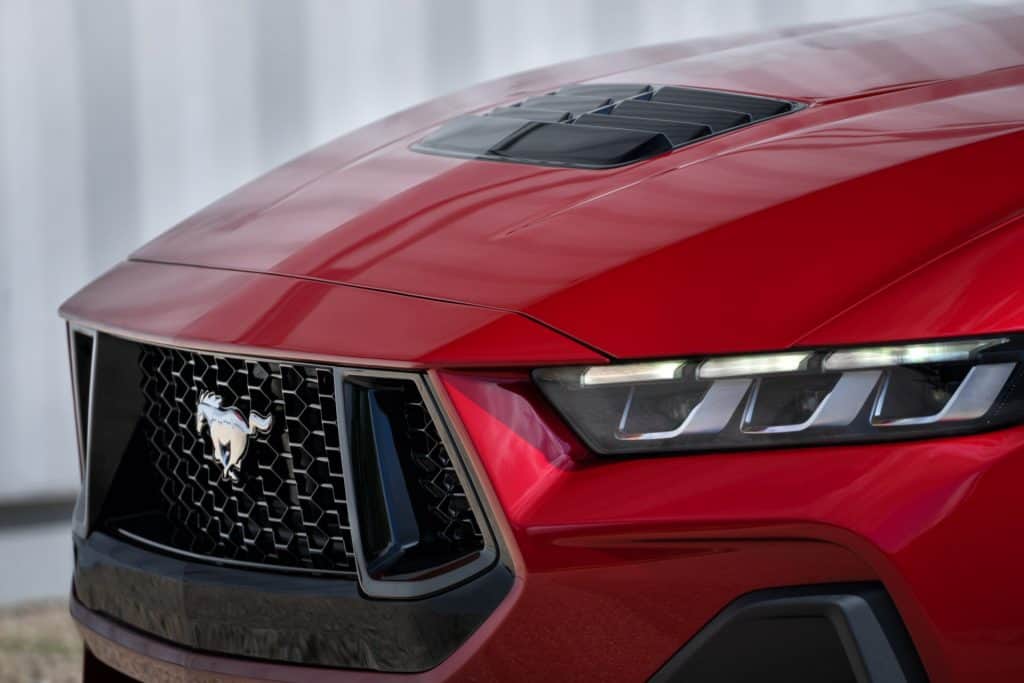
The Mustang has a standard cloth interior with optional Micro Suede vinyl inserts and black seat belts. Premium models come with upgraded wrapped and accent stitched across the instrument panel and door trim. The EcoBoost models feature Ford’s ‘ActiveX’ synthetic leather upholstery with multiple color options, while the GT models gain leather seat inserts. Higher series models offer an upgraded, full-leather steering wheel, as well as a choice of color accent stitching and a unique upholstery perforation across the seat inserts, complemented by color-coordinated, asymmetric accent striping on the seat belts.
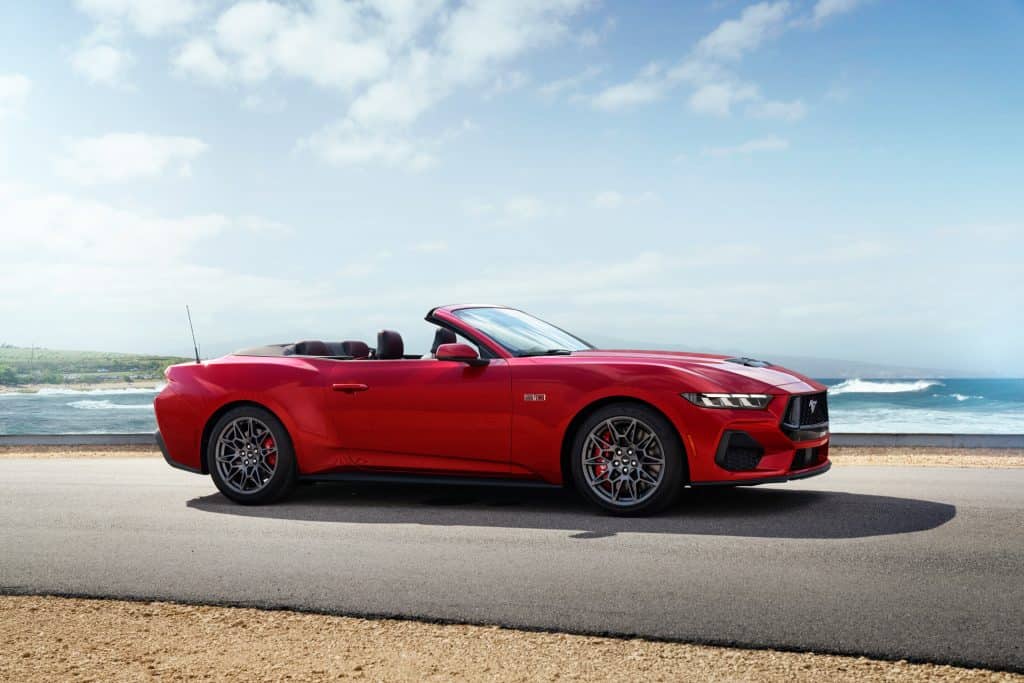
Ford also introduces the Co-Pilot360 for the new Mustang, which includes Speed Sign Recognition, Intelligent Adaptive Cruise Control with Stop-and-Go, Lane Centering Assist, Evasive Steer Assist, and Reverse Brake Assist. The Performance Package also comes with an Active Pothole Recognition function, which continually monitors suspension, body, steering, and braking input and adjusts suspension response accordingly.
The engine options for the seventh-gen Mustang remain – a massive 5.0-liter V8 for the GT and a turbocharged, four-pot mill for the EcoBoost models. Power figures weren’t announced but Ford claims that the fourth-generation 5.0-liter Coyote V8 engine delivers the most naturally aspirated horsepower of any Mustang GT yet. The 10-speed automatic and 6-speed manual transmission options are still on the table, with the Mustang GT with stick shift coming with a standard rev-matching function.
Both models are claimed to be “the most athletic and confidence-inspiring Mustang EcoBoost and GT to drive yet,” said Ed Krenz, Ford Mustang chief nameplate engineer. That’s especially thanks to the Mustang’s six available drive modes to create “the perfect Mustang any time.” These drive modes include Normal, Sport, Slippery, Drag, Track, and one customizable, personalized drive mode.
Meanwhile, the optional Performance Pack comes with a bevy of track-focused features. These include a front Tower Brace, Torsen Limited Slip differential and optional MagneRide active suspension, wider rear wheels and tires, and larger, 390mm front and 355mm rear Brembo brakes. The GT Performance Pack adds brake ducts for even more enhanced cooling and a standard auxiliary engine oil cooler. The Performance Pack also offers optional Recaro seats and an active exhaust.
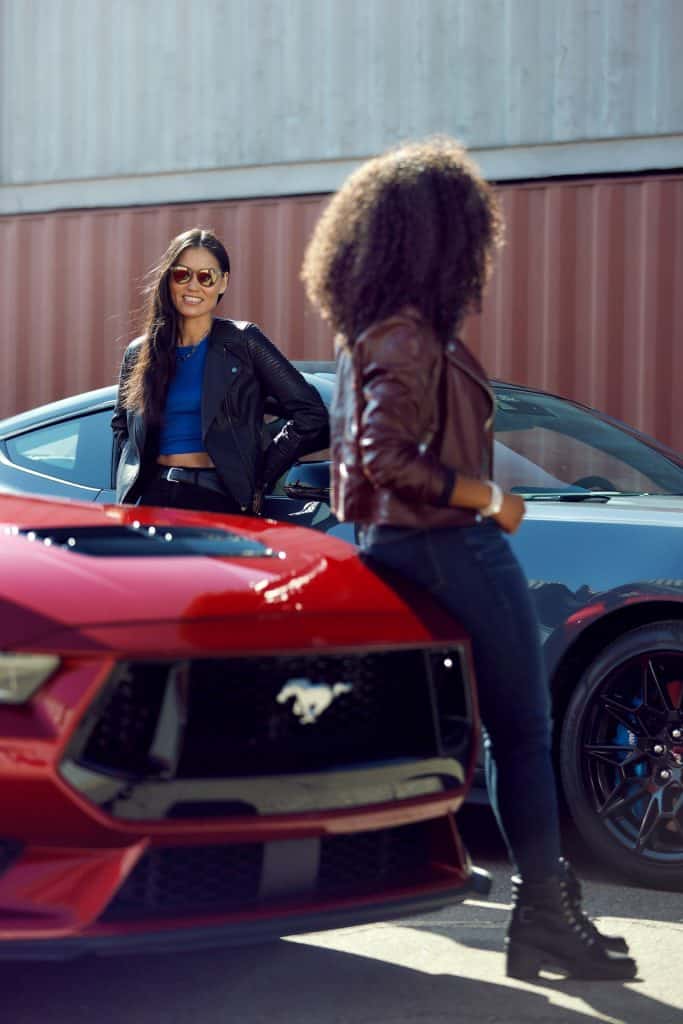
Speaking of exhaust, the Mustang comes with an industry-first remote rev function, which provides the ability to rev the car’s engine remotely using the key fob.
The new Mustang also features a segment-first electronic “drift brake” that combines the rear-wheel-drive drifting capability of the Mustang with the visual appeal and functionality of a traditional, mechanical handbrake. It’s called the Performance Electronic Parking Brake, and it comes standard with the Performance Pack on all Mustang models.
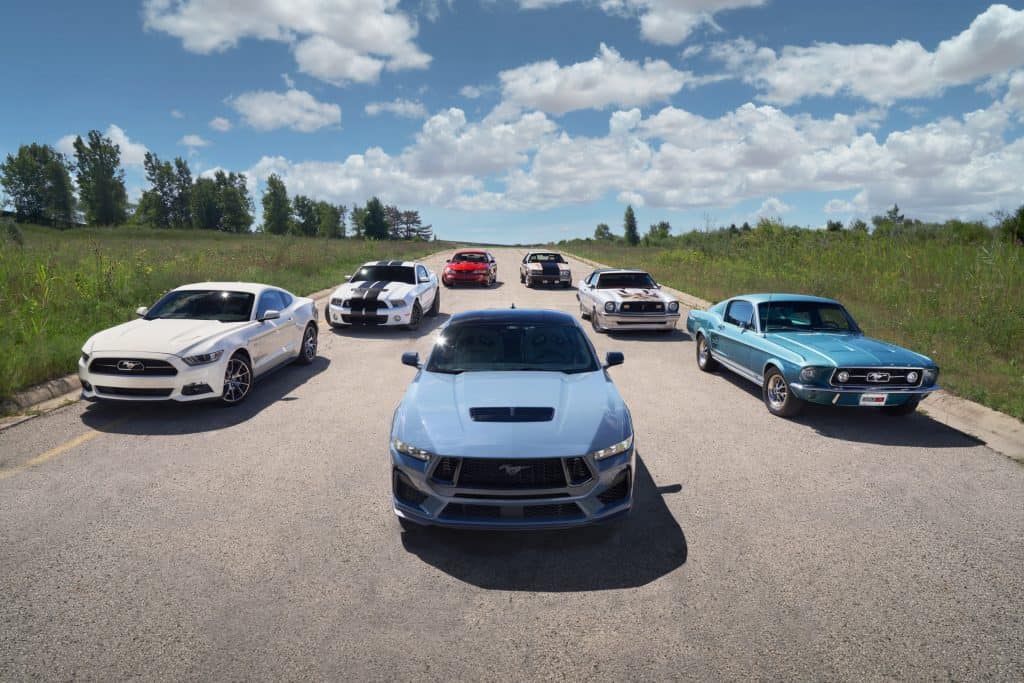
Ford hasn’t disclosed the pricing of the new Mustang just yet but it will go on sale in the US in the summer of 2023. We have yet to see whether the seventh-generation model will sell to its customers but given the historical data within the past several years, we might as well be looking at the next, best-selling pony car again.


